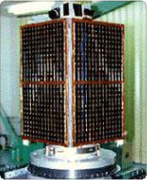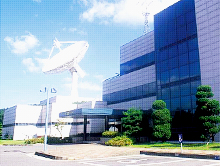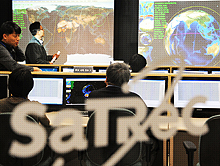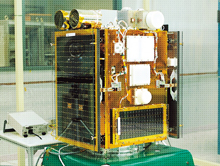Home > Research and Development > KITSAT Series > KITSAT-2

∎ KITSAT-2
Launched in August 1993, KITSAT-2 was Korea’s second satellite and the first domestically developed and manufactured satellite.
Upon returning to Korea, the researchers who led the KITSAT-1 project worked with domestic research teams to conduct the entire development process independently at SaTReC, from mission analysis, design and manufacture, to testing.
KITSAT-2 carried out missions such as earth observation and space plasma measurement. Experience gained from the KITSAT-2 project gave domestic researchers confidence in satellite research as they independently developed solutions for the various challenges involved in satellite development.
- To improve the KITSAT-1 system and acquire independent development capabilities
- Maximum utilization of domestically manufactured components
- To test domestically developed experimental modules
- To promote the development of the domestic space industry
|
| Orbit |
800 km circular sun-synchronous orbit (inclination 98.57o) |
| Size |
352x356x670 mm |
| Weight |
47.5 kg |
| Power Rating |
Max. 30 W |
| Attitude Control Method |
Gravity-gradient stabilization, magnetic torquer, < 5 deg pointing accuracy |
Communication
(Transfer Speed) |
Uplink (145 MHz frequency band): 9600bps
Downlink (436 MHz frequency band): 9600bps
|
| Main Computer |
OBC186(80C186) |
| Payloads |
CCD Earth Imaging System (CEIS)
Next Generation Small Satellite Computer
High Speed Modulation Experiment Device
Digital Store and Forward Communication Experiment (DSFCE)
Low Energy Electron Detector (LEED)
|






